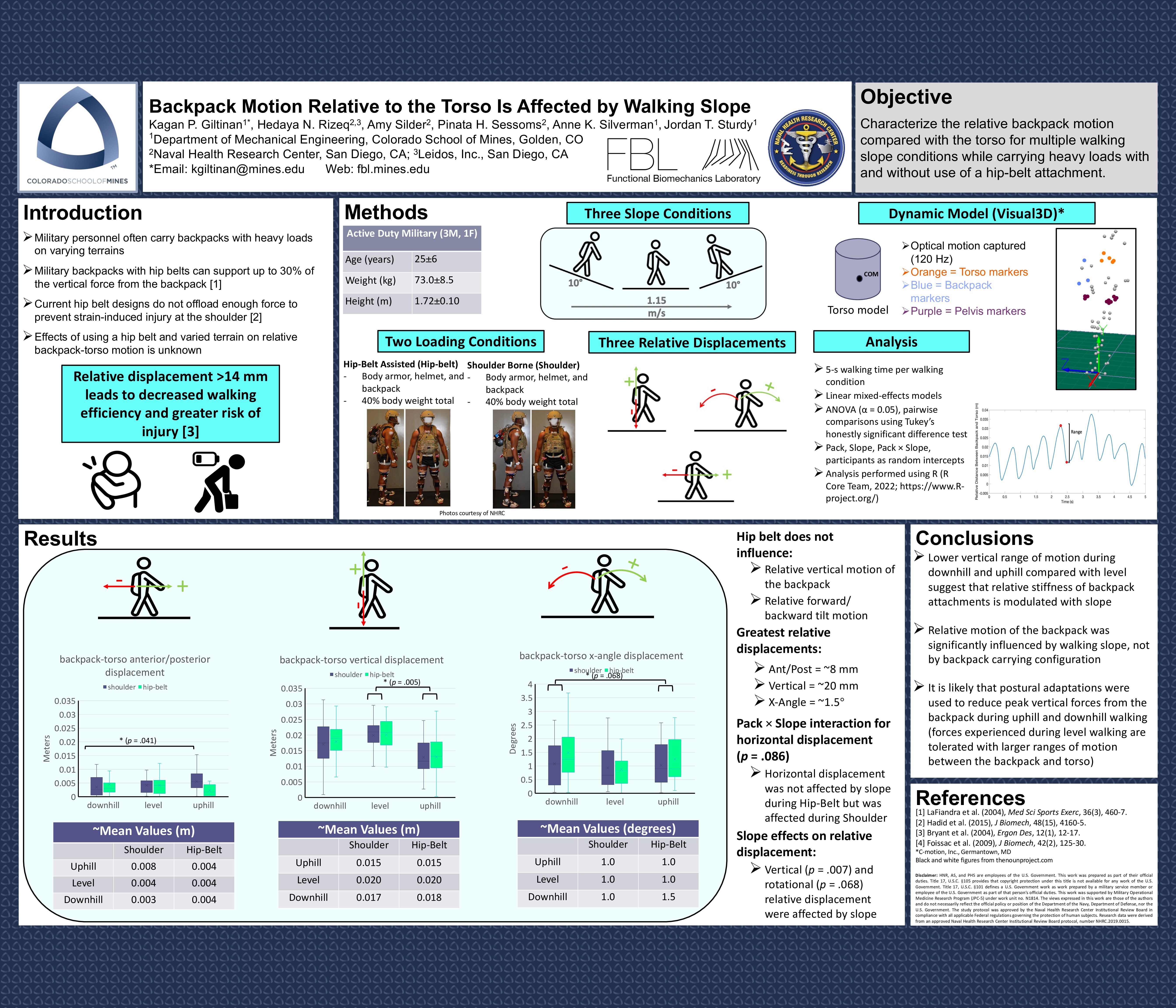Poster Presentation by Kagan Giltinan
Senior, Mechanical Engineering
Mentor: Anne Silverman, Mechanical Engineering
Mentor: Jordan Sturdy, Graduate Student in Mechanical Engineering
Abstract:
Military backpacks are equipped with hip belts, which have been shown to support 30% of the vertical force from the backpack. These belts do not offload enough force to prevent tissue strain on the shoulders, which can lead to discomfort and injury. Stiffness and damping in a backpack’s straps and connections can affect backpack movement, which may be related to tissue strain, when walking. However, the effects of using a hip belt on relative motion between the backpack and the wearer are unclear.
Four active duty military participants walked at 1.15 m/s on uphill (+10°), downhill (−10°), and level (0°) slopes. They wore body armor with helmet and backpack using only the shoulder straps (Shoulder) or with the hip belt secured (Hip Belt), carrying 40% body weight total. 3D motion of the backpack and torso was obtained with optical motion capture. Maxima and minima of backpack-torso displacement were calculated in each walking condition. The difference between sequential maxima and minima were used to obtain ranges of vertical backpack-torso displacement during each walking condition for each participant.
The hip-belt did not influence relative vertical motion of the backpack. The pack and slope did affect the horizontal relative displacement (p = .086). The greatest relative displacement for anterior/posterior direction was 7.7mm, and vertical direction was 19.9mm. Horizontal displacement was not affected by slope alone during Hip Belt, but was affected during Shoulder (p = .056). The vertical relative displacement was affected by slope, p = .007.
